If you’re a football fan or simply amazed by impressive structures, you’ve come to the right place! In this article, we’ll explore the top 10 biggest football stadiums in the world. From North Korea to Germany, Brazil to Australia, these stadiums offer incredible capacity and have hosted numerous important matches.
Top 10 biggest football stadiums in the world
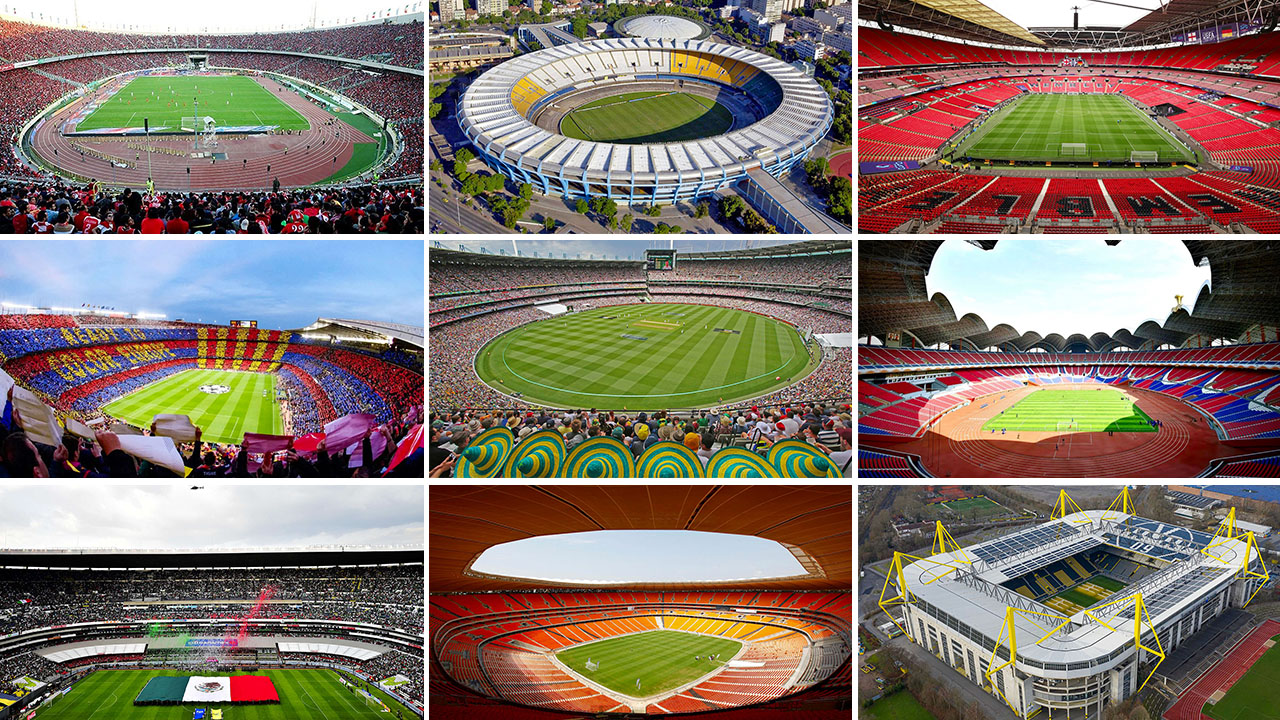
So, let’s dive into the world of football and discover these magnificent stadiums that have become icons in their own right.
Rungrado 1st of May Stadium – North Korea
- Capacity: 150,000
- Location: North Korea
- Events: Various, including football matches
Rungrado 1st of May Stadium, located in Pyongyang, North Korea, is one of the most iconic and massive sports stadiums in the world. It holds significant cultural and political importance within the country and is often associated with North Korea’s state-controlled events and displays of power. The stadium’s name, “Rungrado 1st of May,” is a tribute to International Workers’ Day, celebrated on May 1st, which is a significant holiday in North Korea.
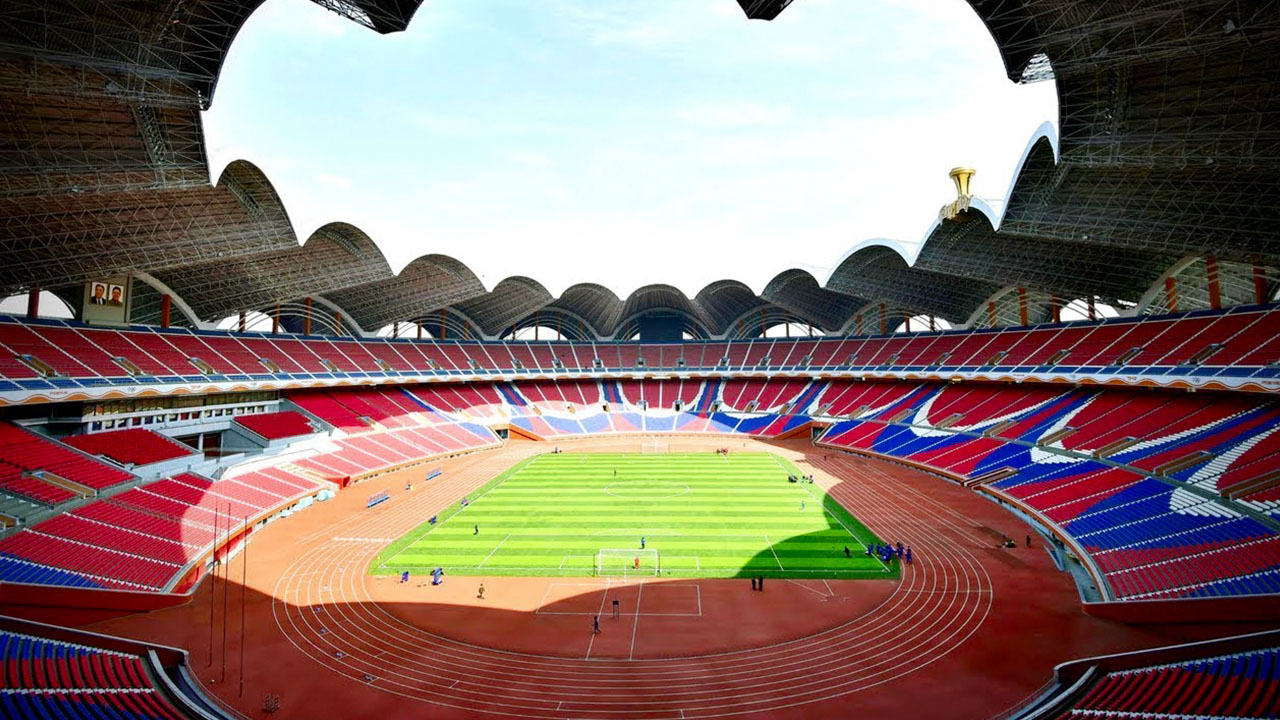
The stadium’s construction was completed in 1989, and it boasts a staggering seating capacity of approximately 150,000 spectators, making it the largest stadium globally in terms of capacity. The colossal scale of the stadium is a reflection of North Korea’s emphasis on grandiose architecture and monumental structures. Its sheer size and design exemplify the country’s commitment to showcasing its strength and unity to both domestic and international audiences.
Rungrado 1st of May Stadium has been primarily utilized for hosting various events, including massive state-sponsored performances, political rallies, and sporting events such as soccer matches and athletics competitions. One of the stadium’s most notable uses is for the “Mass Games,” a choreographed spectacle involving tens of thousands of participants performing synchronized routines to celebrate North Korea’s ideology, history, and leadership.
Despite its impressive dimensions and monumental significance, access to the stadium for foreign visitors is often restricted and tightly controlled by the North Korean government. This limited access adds to the mystique surrounding the stadium and its role in the country’s controlled narrative.
Signal Iduna Park – Germany
- Capacity: 81,365
- Location: Germany
- Home Team: Borussia Dortmund
Signal Iduna Park, located in Dortmund, Germany, is one of the most iconic and revered football stadiums in the world. Known for its passionate atmosphere, storied history, and modern facilities, the stadium holds a special place in the hearts of football enthusiasts and fans of Borussia Dortmund, one of Germany’s most successful and popular football clubs.
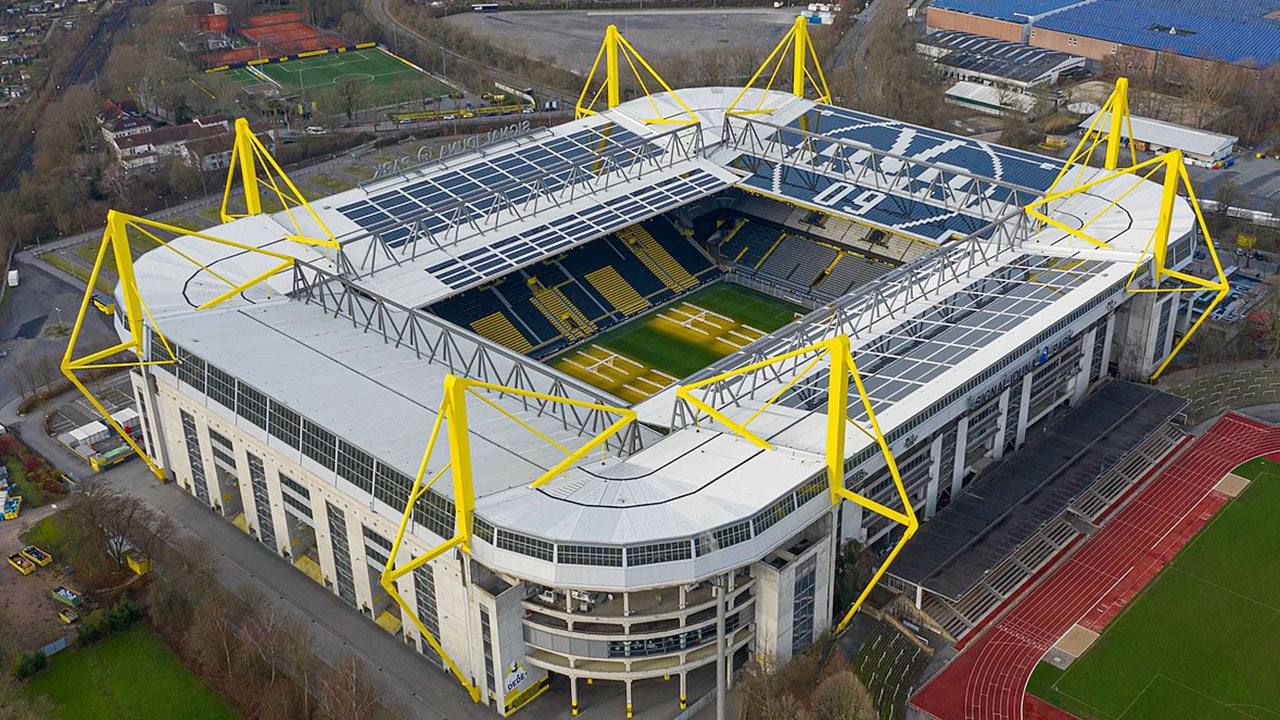
Formerly known as Westfalenstadion, the stadium’s name was changed to Signal Iduna Park due to a sponsorship agreement with Signal Iduna, an insurance company. The stadium is situated in the North Rhine-Westphalia region and has become a symbol of the city’s deep-rooted football culture.
Signal Iduna Park’s capacity can exceed 80,000 spectators, making it one of Europe’s largest football venues. Its renowned “Yellow Wall” (Gelbe Wand) stands out as a unique and awe-inspiring feature. This massive standing terrace area, painted in Borussia Dortmund’s yellow and black colors, can accommodate over 25,000 passionate fans, creating an electric and intimidating atmosphere during matches.
The stadium has a rich history of hosting not only Borussia Dortmund’s Bundesliga and European matches but also key matches for the German national team, including the 2006 FIFA World Cup. It has been the backdrop for memorable football moments and has witnessed some of the sport’s greatest talents gracing its pitch.
Beyond football matches, Signal Iduna Park has been utilized for various events, including concerts and cultural gatherings. Its versatile design and modern amenities contribute to its status as a premier entertainment venue.
Signal Iduna Park stands as a testament to the deep connection between football, community, and culture in Germany. The passionate fans, world-class facilities, and historical significance make it a must-visit destination for football aficionados from around the globe.
Maracanã Stadium – Brazil
- Capacity: 78,838
- Location: Brazil
- Events: World Cup finals and important matches
The Maracanã Stadium, situated in Rio de Janeiro, Brazil, is an iconic and storied sports arena that has left an indelible mark on the world of football and global sports culture. Renowned for its historical significance, grandeur, and vibrant atmosphere, the Maracanã Stadium stands as a symbol of Brazil’s deep passion for the beautiful game and its rich cultural heritage.
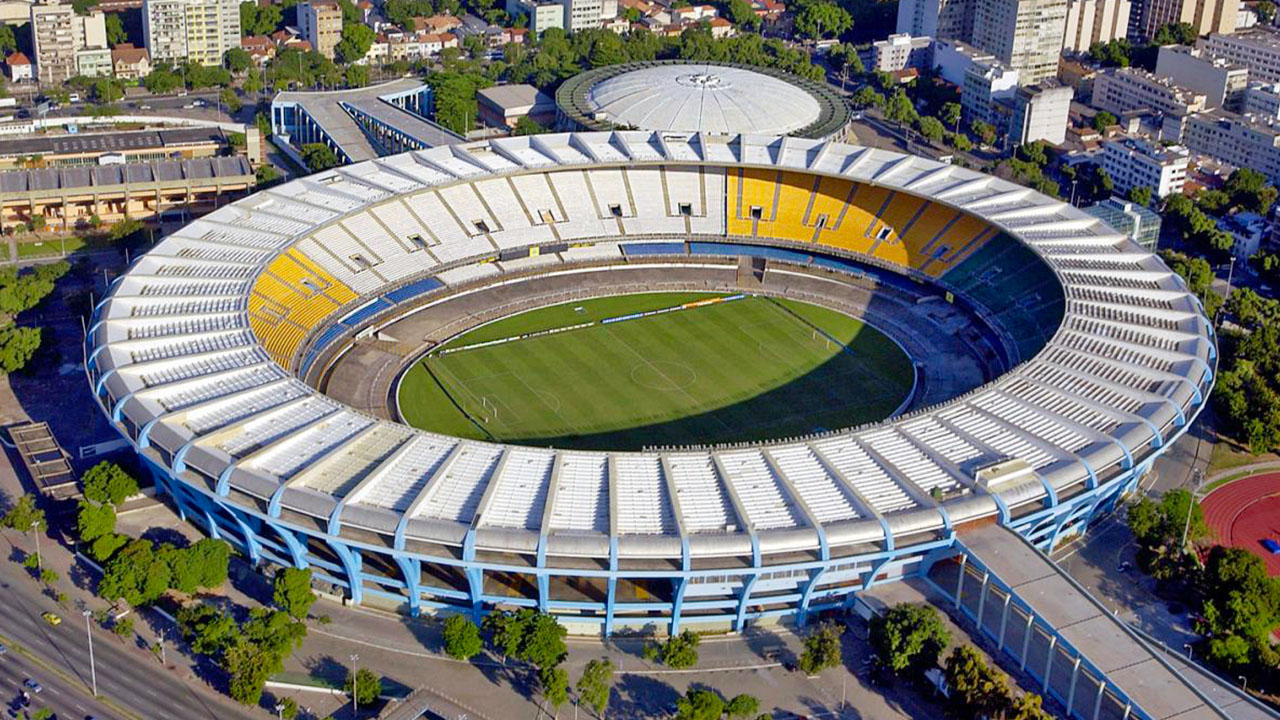
Constructed in 1950 to host the FIFA World Cup, the Maracanã Stadium quickly became a hallowed ground for football enthusiasts around the globe. With a seating capacity that can exceed 78,838 spectators, the stadium is one of the largest and most revered football venues in the world.
The Maracanã’s history is filled with memorable moments and historic matches. It gained international recognition as the stage for the 1950 FIFA World Cup final, which witnessed the famous “Maracanazo,” when Uruguay defeated Brazil, sending shockwaves through the footballing world.
Over the years, the stadium has been the epicenter of countless football matches, including domestic league fixtures, international competitions, and Copa Libertadores clashes. Its electric atmosphere, characterized by passionate fans and colorful displays, adds to the allure and intensity of every event.
The Maracanã Stadium has also played host to a variety of other events, such as major concerts, cultural gatherings, and even religious ceremonies. Its versatile design and central location within Rio de Janeiro make it a hub of activity, showcasing its role as both a sports arena and a cultural institution.
The stadium underwent significant renovations in preparation for the 2014 FIFA World Cup and the 2016 Summer Olympics, modernizing its facilities and enhancing the overall fan experience. The iconic structure retained its historical charm while embracing modern amenities.
The Maracanã’s elliptical shape, towering stands, and sweeping arches make it a distinctive and instantly recognizable landmark on Rio’s skyline. Its cultural significance and historical resonance extend beyond football, capturing the essence of Brazil’s love for sports and celebration.
Camp Nou – Spain
- Capacity: 99,354
- Location: Barcelona, Spain
- Home Team: FC Barcelona
Camp Nou, located in Barcelona, Spain, is one of the most iconic and revered football stadiums in the world. Home to FC Barcelona, one of the most successful and beloved football clubs globally, Camp Nou holds a special place in the hearts of football enthusiasts and fans of the sport.
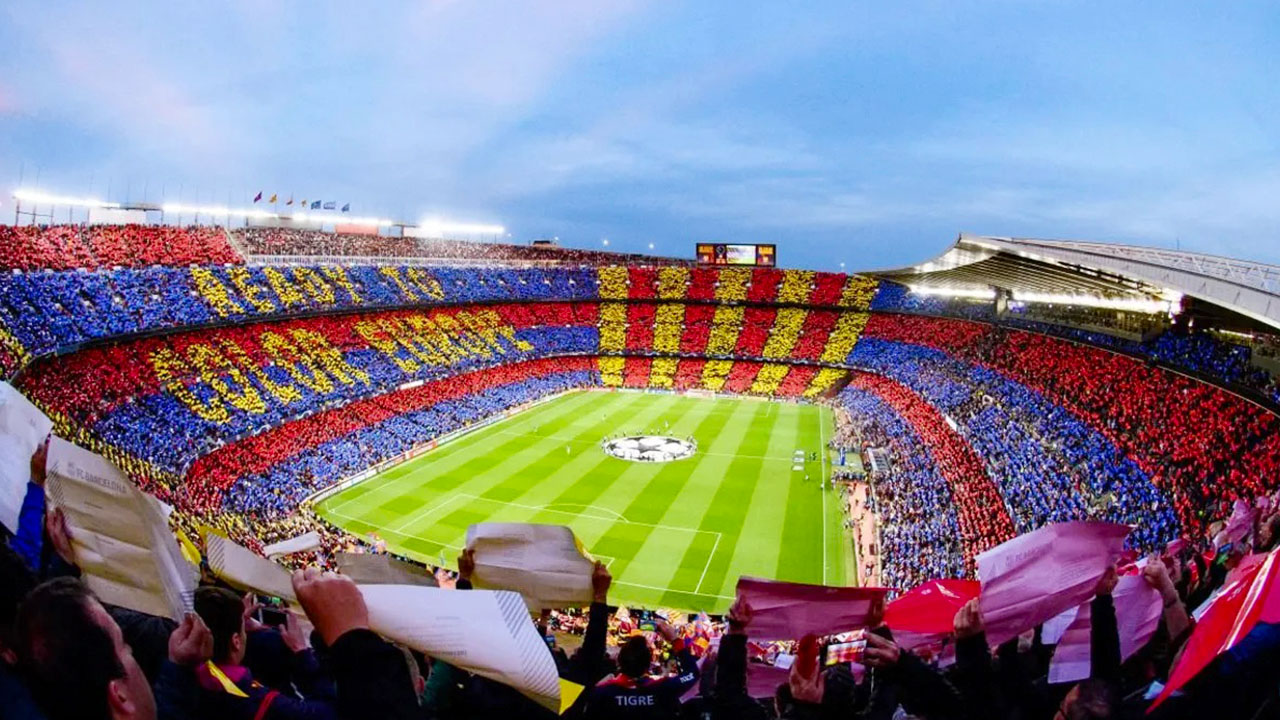
With a seating capacity that can exceed 99,000 spectators, Camp Nou is not only the largest stadium in Spain but also one of the largest in Europe. The stadium’s name, which translates to “New Field” in Catalan, reflects its historical significance and ongoing legacy in the world of football.
Camp Nou’s history is deeply intertwined with FC Barcelona’s storied past. The stadium was officially inaugurated in 1957, and since then, it has been the stage for countless memorable matches, including domestic and international competitions. The stadium has been witness to some of football’s most legendary players and moments, making it a pilgrimage site for football fans around the globe.
One of the standout features of Camp Nou is its unique and electric atmosphere, especially during matches. The passionate fans, known as “culés,” fill the stands with their enthusiastic chants and unwavering support for the team. The grandeur of the stadium, coupled with the intense energy of the crowd, creates an experience that is unparalleled in the world of sports.
Over the years, Camp Nou has undergone various renovations and expansions to enhance both its capacity and facilities. Plans have been proposed for a significant renovation project, known as the “Espai Barça,” which aims to modernize the stadium and its surrounding areas while preserving its historic essence.
Beyond football matches, Camp Nou has also been a venue for cultural events, concerts, and other gatherings. Its versatile design and central location in Barcelona contribute to its status as a premier destination for both sports and entertainment.
Azadi Stadium – Iran
- Capacity: 80,000 (approximate)
- Location: Iran
- Events: Football matches and other sporting events
Azadi Stadium, located in Tehran, Iran, is one of the most significant and historic sports venues in the Middle East. Its name, “Azadi,” translates to “Freedom” in Persian, symbolizing the stadium’s role in the country’s cultural and political landscape. The stadium holds a special place in the hearts of Iranians and serves as a focal point for sporting events, cultural gatherings, and national celebrations.
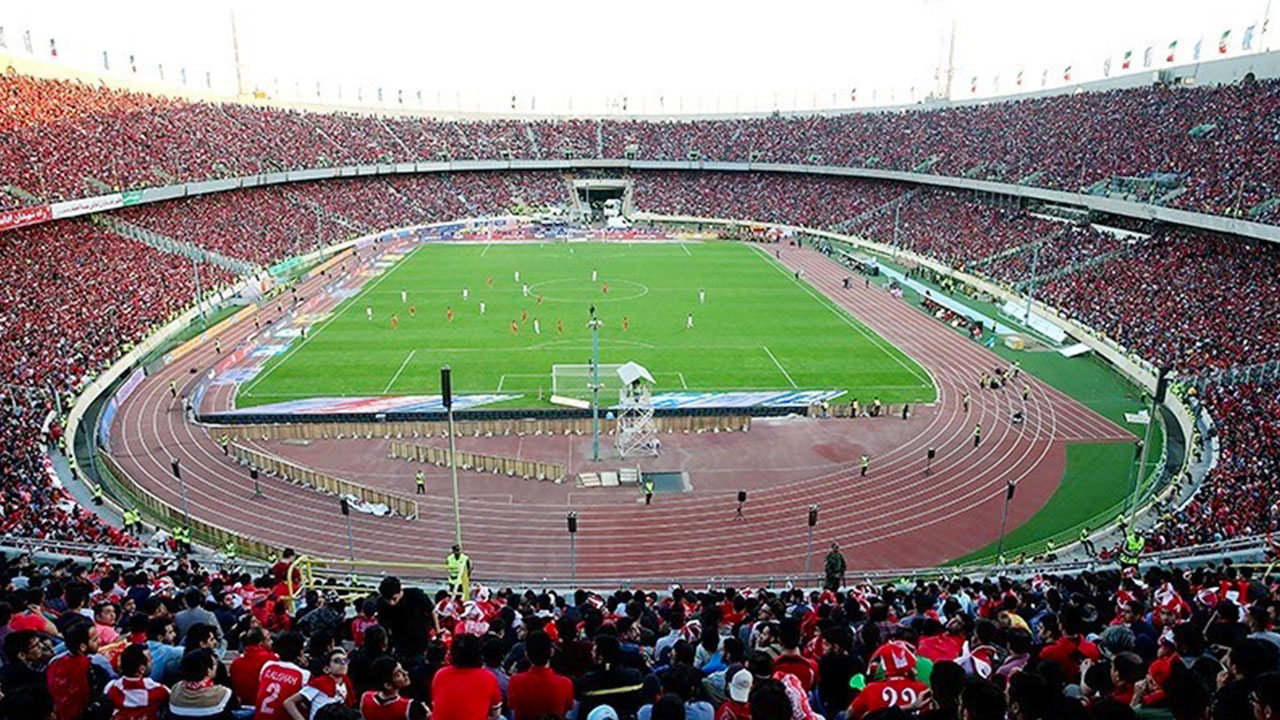
Built in 1971, Azadi Stadium boasts a seating capacity of around 80,000 spectators, making it one of the largest stadiums in Asia. The stadium’s design is notable for its distinctive arches and open-bowl structure, creating a unique and memorable architectural presence.
Azadi Stadium has been the home of the Iranian national football team and has witnessed countless domestic and international football matches over the years. It has hosted various sporting events, including not only football but also athletics competitions and other sports, showcasing its versatility and importance within Iran’s sports community.
One of the most remarkable aspects of Azadi Stadium is its role as a cultural and political symbol. It has been the site of numerous significant gatherings, rallies, and ceremonies, playing a pivotal role in Iran’s history and identity. The stadium’s grandeur and capacity have made it an ideal location for hosting major events, from political speeches to religious gatherings.
The passionate Iranian fans, known for their enthusiastic support and unwavering dedication, create an electric atmosphere during matches and events at Azadi Stadium. The sea of red, green, and white, representing the Iranian flag, further enhances the visual spectacle and sense of unity within the crowd.
In recent years, there have been discussions about renovating and modernizing Azadi Stadium to meet international standards and accommodate larger audiences. These efforts aim to enhance the overall experience for spectators and maintain the stadium’s status as a premier venue in the region.
Wembley Stadium – England
- Capacity: 90,000
- Location: London, England
- Events: FA Cup final, England national team matches, major football events
Wembley Stadium, located in London, England, is one of the most iconic and historic sports and entertainment venues in the world. Renowned for its grandeur, historical significance, and role in hosting major football events and concerts, Wembley Stadium holds a special place in the hearts of sports enthusiasts and fans of music alike.
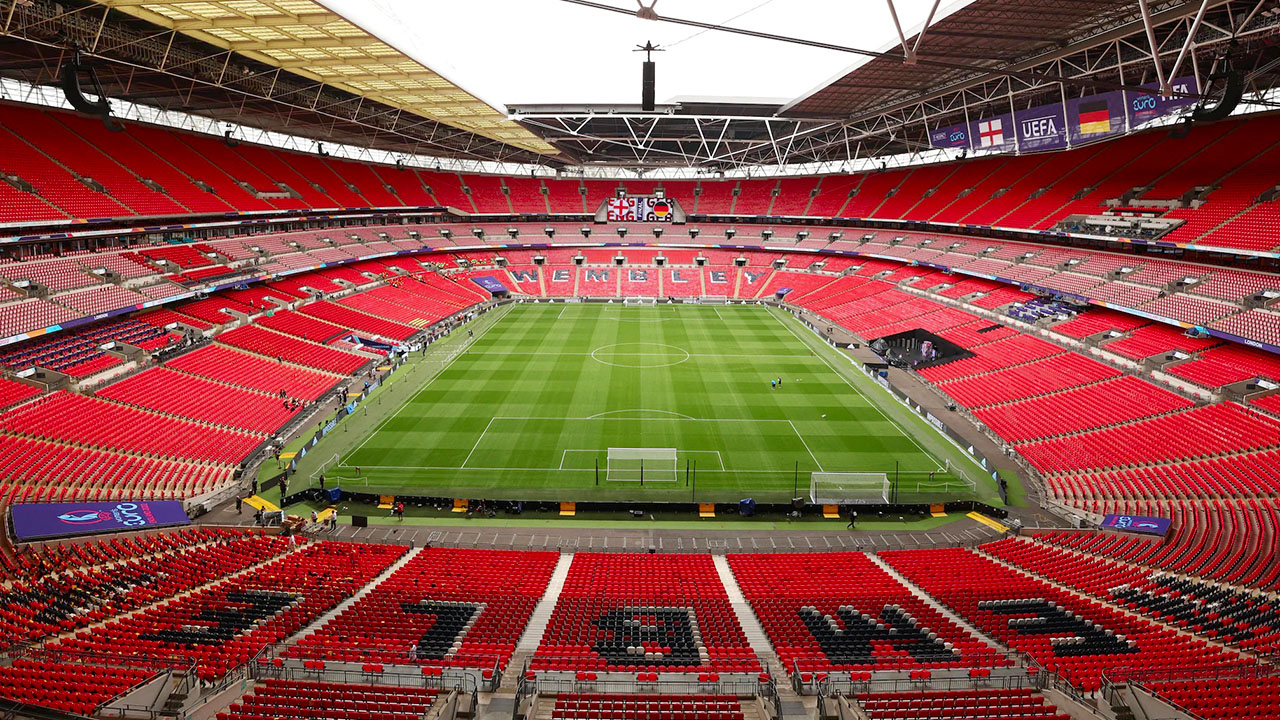
The original Wembley Stadium was built in 1923 and became known as the “Empire Stadium.” It gained international fame as the home of English football and the site of numerous historic matches, including the 1966 FIFA World Cup final, where England secured their first and only World Cup victory.
The modern Wembley Stadium, officially opened in 2007, was built on the same hallowed grounds as its predecessor. The new stadium’s design pays homage to the original while incorporating modern architectural elements. With a seating capacity of around 90,000 spectators, it is the second-largest stadium in Europe and serves as the national stadium of England.
Wembley Stadium has been the stage for a multitude of prestigious events, including domestic and international football matches, FA Cup finals, and League Cup finals. It has hosted UEFA Champions League finals, European Championship matches, and other international football tournaments. The stadium’s significance extends beyond football, as it has also been the venue for major concerts, musical performances, and cultural gatherings, featuring some of the world’s most prominent artists.
The stadium’s most iconic feature is its distinctive arch, which soars over the structure and has become a symbol of modern London. This arch is not only an engineering marvel but also serves as a reminder of the stadium’s status as a contemporary marvel while honoring its historic legacy.
Wembley Stadium’s electrifying atmosphere, created by the passionate fans and the stadium’s impressive scale, adds to its allure. The experience of witnessing a football match or a concert at Wembley is unforgettable, marked by the sea of fans, the vibrant energy, and the historic significance of the venue.
Estadio Azteca – Mexico
- Capacity: 87,523
- Location: Mexico City, Mexico
- Events: Two World Cup finals, Club América matches
Estadio Azteca, located in Mexico City, Mexico, is one of the most legendary and storied football stadiums in the world. Renowned for its historical significance, monumental events, and passionate atmosphere, Estadio Azteca holds a special place in the hearts of football fans and stands as an iconic symbol of Mexican sports culture.
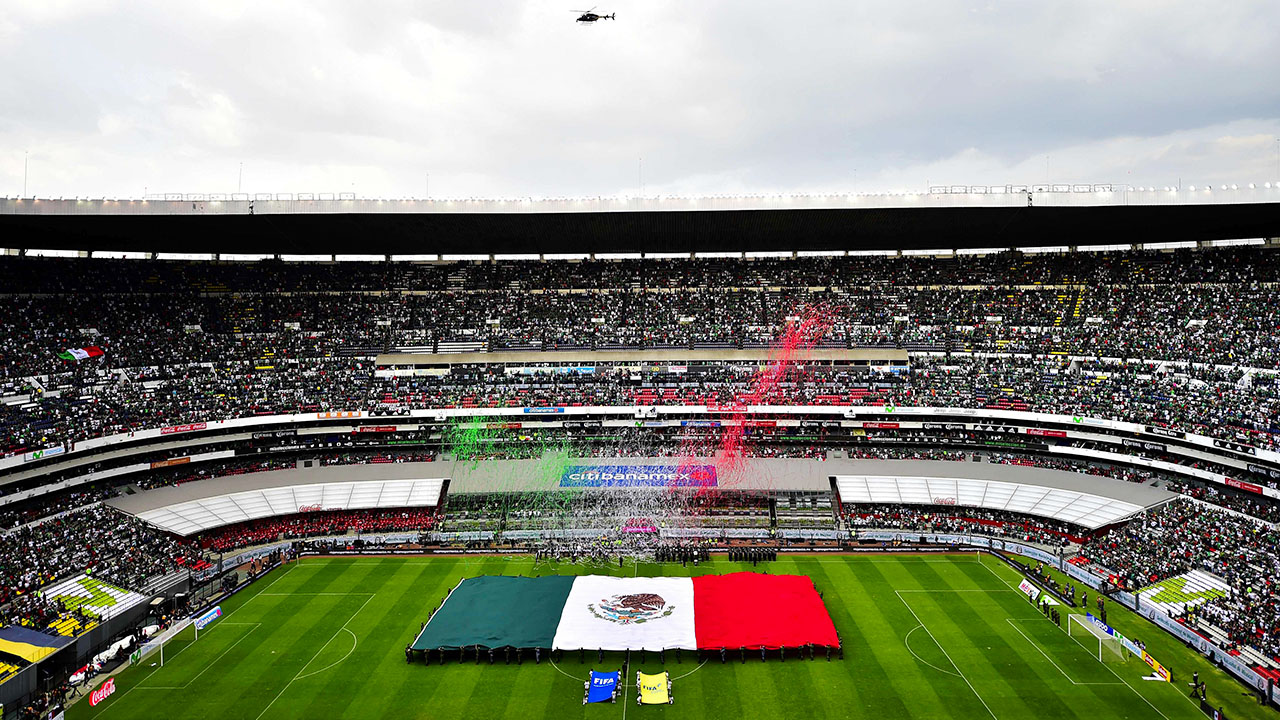
Constructed in 1966, Estadio Azteca has a seating capacity of approximately 87,523 spectators, making it one of the largest stadiums in the Americas. The stadium’s name pays homage to the Aztec civilization that once thrived in the region, connecting the present-day sporting arena to Mexico’s rich ancient history.
Estadio Azteca’s history is marked by several historic football moments. It gained international recognition as the venue for the 1970 and 1986 FIFA World Cup finals, where football legends like Pelé and Diego Maradona left an indelible mark. Maradona’s infamous “Hand of God” goal and his “Goal of the Century” were both scored at Estadio Azteca during the 1986 World Cup quarterfinals.
The stadium has been the home of Club América, one of Mexico’s most successful and popular football clubs, as well as the Mexican national football team. The fervent atmosphere created by the passionate fans, both for club and country, transforms Estadio Azteca into a cauldron of energy during matches, with vibrant chants and colorful displays.
Beyond football, Estadio Azteca has hosted a wide array of events, including concerts by renowned artists and cultural gatherings. Its versatile design and central location within Mexico City make it a premier venue for both sports and entertainment.
One of the most recognizable features of Estadio Azteca is the towering concrete “Palomar” on one side of the stadium. This unique architectural element adds to the stadium’s identity and serves as a distinctive backdrop during matches and events.
FNB Stadium – South Africa
- Capacity: 94,736
- Location: Johannesburg, South Africa
- Events: 2010 FIFA World Cup opening and closing matches
FNB Stadium, located in Johannesburg, South Africa, is one of the most renowned and significant sports venues on the African continent. Known for its historical importance, role in hosting major sporting events, and connection to South Africa’s socio-political landscape, FNB Stadium holds a special place in the hearts of South Africans and the global sports community.
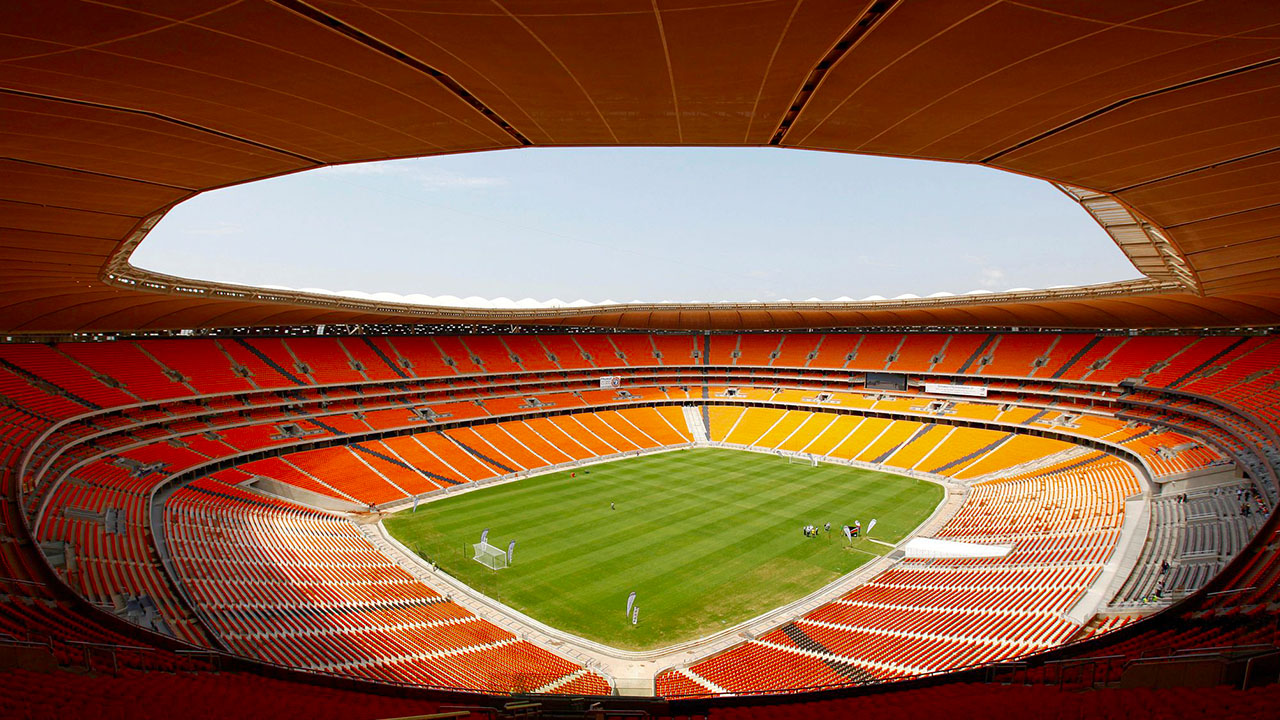
Originally built in 1989 and known as “Soccer City,” the stadium underwent a substantial renovation and expansion leading up to the 2010 FIFA World Cup. The upgraded stadium was officially reopened as FNB Stadium and became the flagship venue for the tournament, hosting both the opening match and the final. The stadium’s capacity can accommodate over 94,736 spectators, making it one of the largest stadiums in Africa.
FNB Stadium’s history is deeply intertwined with the transformation of South Africa. It was at this very venue that the historic presidential inauguration of Nelson Mandela took place in 1994, marking the end of apartheid and the dawn of a new era of democracy in the country. This event solidified the stadium’s place in South African history and its significance as a symbol of unity and reconciliation.
The stadium is also the home of the South African national football team and has hosted numerous international and domestic football matches, rugby matches, and concerts. Its versatile design and modern facilities make it an ideal venue for a wide range of events, from sports to entertainment and cultural gatherings.
One of FNB Stadium’s most distinctive features is its “Calabash” design, which resembles a traditional African pot or gourd. This architectural concept pays homage to South Africa’s cultural heritage while embracing modernity and innovation.
FNB Stadium’s atmosphere during events is characterized by the passionate energy of the crowd, creating an electric and unforgettable experience for both athletes and spectators. The colorful displays, vibrant chants, and unity among fans contribute to the stadium’s unique ambiance.
Gelora Bung Karno Stadium – Indonesia
- Capacity: 88,306
- Location: Jakarta, Indonesia
- Events: 1962 Asian Games, ASEAN Games, and other major sporting events
Gelora Bung Karno Stadium, located in Jakarta, Indonesia, is a historic and iconic sports venue that holds a special place in the hearts of Indonesians and the broader Southeast Asian region. Known for its historical importance, vibrant atmosphere, and role in hosting major sporting events, the stadium stands as a symbol of Indonesia’s passion for sports and its cultural heritage.
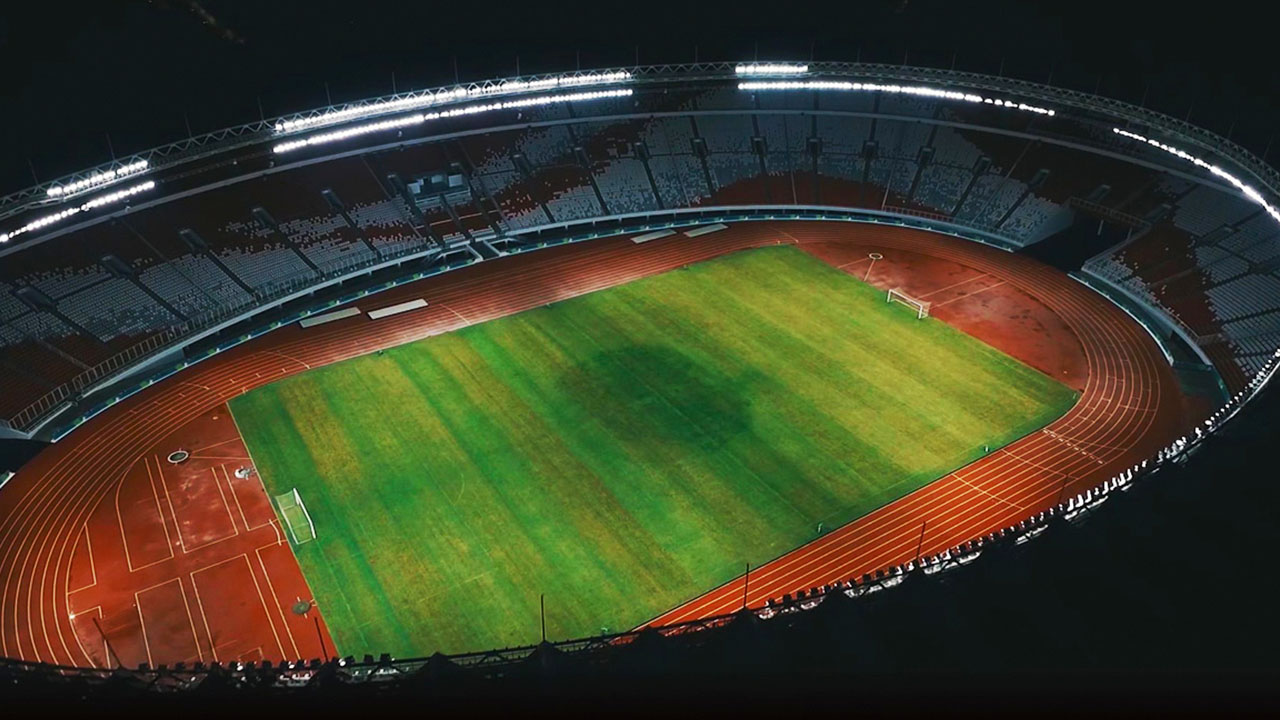
Named after Indonesia’s first president, Sukarno, who is often referred to as “Bung Karno,” the stadium was officially inaugurated in 1962. With a seating capacity of around 88,306 spectators, Gelora Bung Karno Stadium is one of the largest stadiums in Asia and serves as the national stadium of Indonesia.
The stadium’s history is closely linked to Indonesia’s journey as an independent nation. It has been the site of numerous significant events, including the opening and closing ceremonies of the 1962 Asian Games, which marked Indonesia’s emergence onto the international stage. The stadium has also hosted a wide range of international and domestic sporting events, including football matches, athletics competitions, and more.
Gelora Bung Karno Stadium has a rich football legacy and has been the home of the Indonesian national football team. The passionate atmosphere created by the enthusiastic fans, combined with the stadium’s impressive scale, transforms it into a cauldron of energy during matches.
The stadium’s unique design includes a towering main stand and distinctive open-air structures, giving it a characteristic appearance that reflects Indonesia’s architectural heritage. Its central location in Jakarta makes it a focal point for sporting and entertainment events, concerts, and cultural gatherings.
Over the years, Gelora Bung Karno Stadium has undergone various renovations and upgrades to modernize its facilities and maintain its status as a premier sports venue. The stadium has also played host to numerous concerts by international and local artists, further highlighting its role as a cultural hub.
Melbourne Cricket Ground – Australia
- Capacity: 100,024
- Location: Melbourne, Australia
- Events: Australian Football League (AFL) grand finals and cricket matches
The Melbourne Cricket Ground (MCG), situated in Melbourne, Australia, is one of the most iconic and historic sports venues in the world. Renowned for its rich cricketing heritage, versatile facilities, and memorable events, the MCG holds a special place in the hearts of Australians and sports enthusiasts globally.
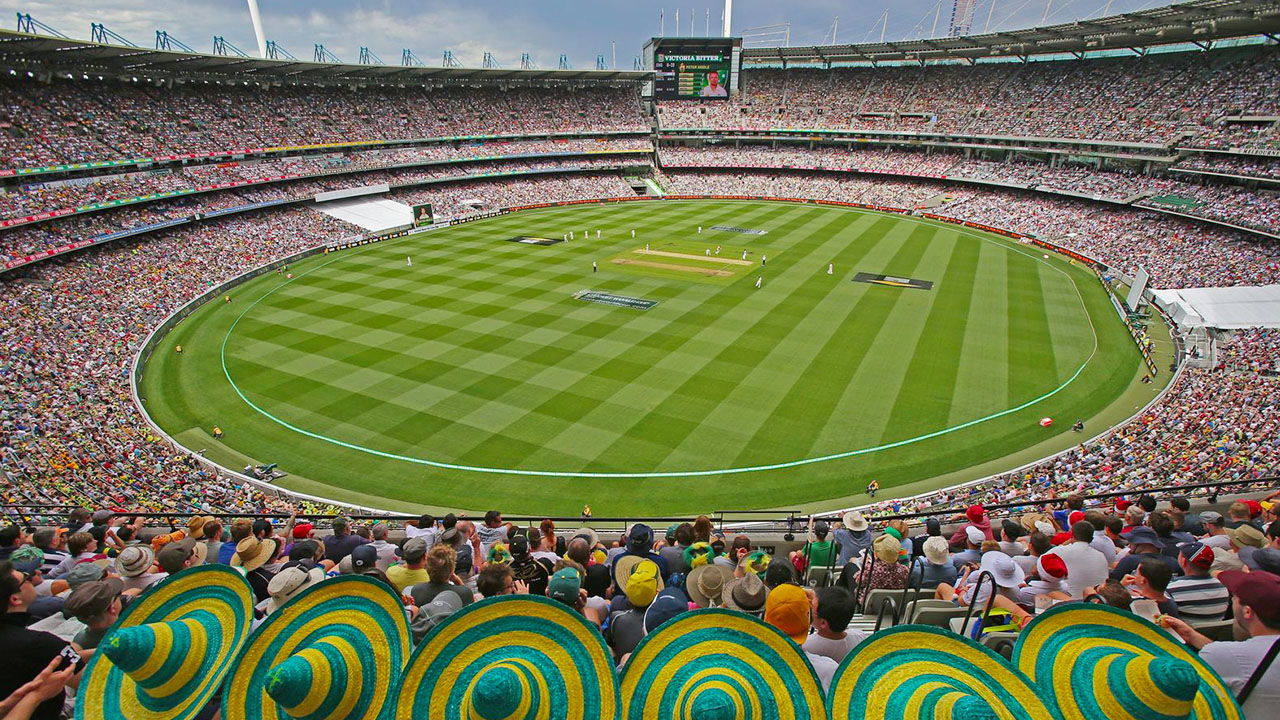
Established in 1853, the MCG is not only one of the oldest sporting grounds in Australia but also one of the largest, with a seating capacity of over 100,000 spectators. It is considered the spiritual home of Australian rules football and cricket, hosting numerous significant matches and events in both sports throughout its illustrious history.
The MCG has witnessed many historic moments, including the first Test match played in 1877 and numerous Ashes contests between Australia and England. The stadium’s significance was further elevated as the main venue for the 1956 Summer Olympics and the 2006 Commonwealth Games, showcasing its versatility and capacity to host large-scale international events.
Cricket matches at the MCG, particularly during the Boxing Day Test, have become an integral part of Australian culture and tradition. The festive atmosphere, accompanied by enthusiastic fans and iconic chants, creates an electric ambiance that reverberates across the grounds.
Beyond cricket, the MCG is also home to the Melbourne Football Club and hosts Australian rules football matches, including the Australian Football League (AFL) Grand Final, one of the most significant events in the Australian sporting calendar.
The MCG’s architectural design features the imposing Great Southern Stand, which stands as a testament to the stadium’s grandeur and historical significance. Renovations and improvements have been carried out over the years to enhance facilities, modernize amenities, and ensure a world-class spectator experience.
In addition to sports, the MCG has played host to numerous concerts, cultural events, and gatherings, further solidifying its role as a versatile and iconic venue.
Conclusion
As we conclude our journey through the top 10 biggest football stadiums in the world, it’s clear that these architectural marvels are more than just venues for matches. They represent the spirit of the countries they reside in, their passion for football, and the joy that the sport brings to millions of fans worldwide. Whether you’re a football enthusiast or simply amazed by impressive structures, visiting these stadiums is an experience that should not be missed. So, pack your bags and embark on an adventure that will take you to the heart of the beautiful game.



